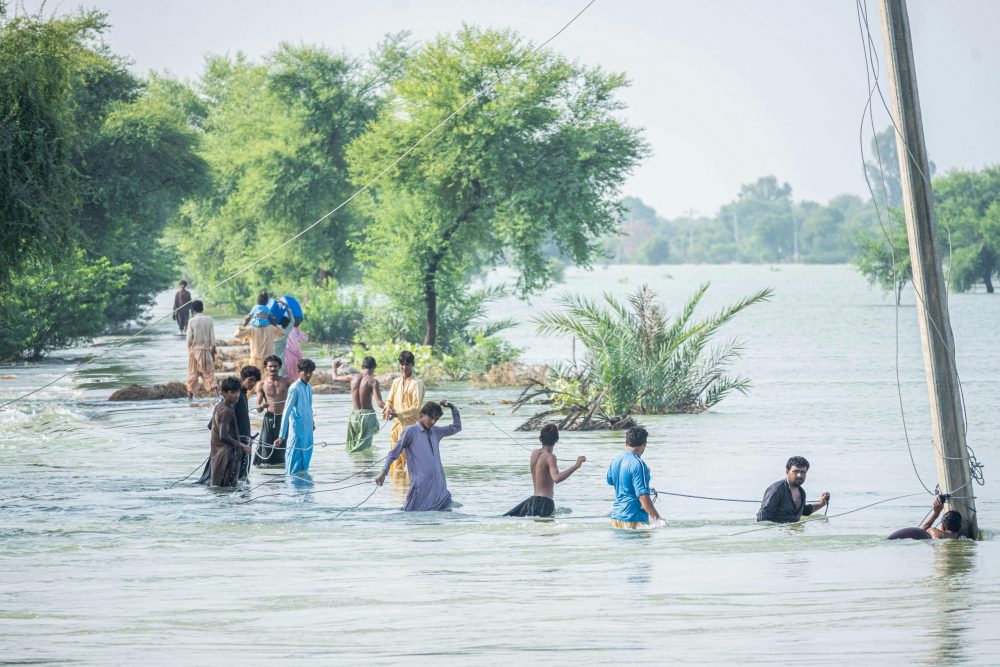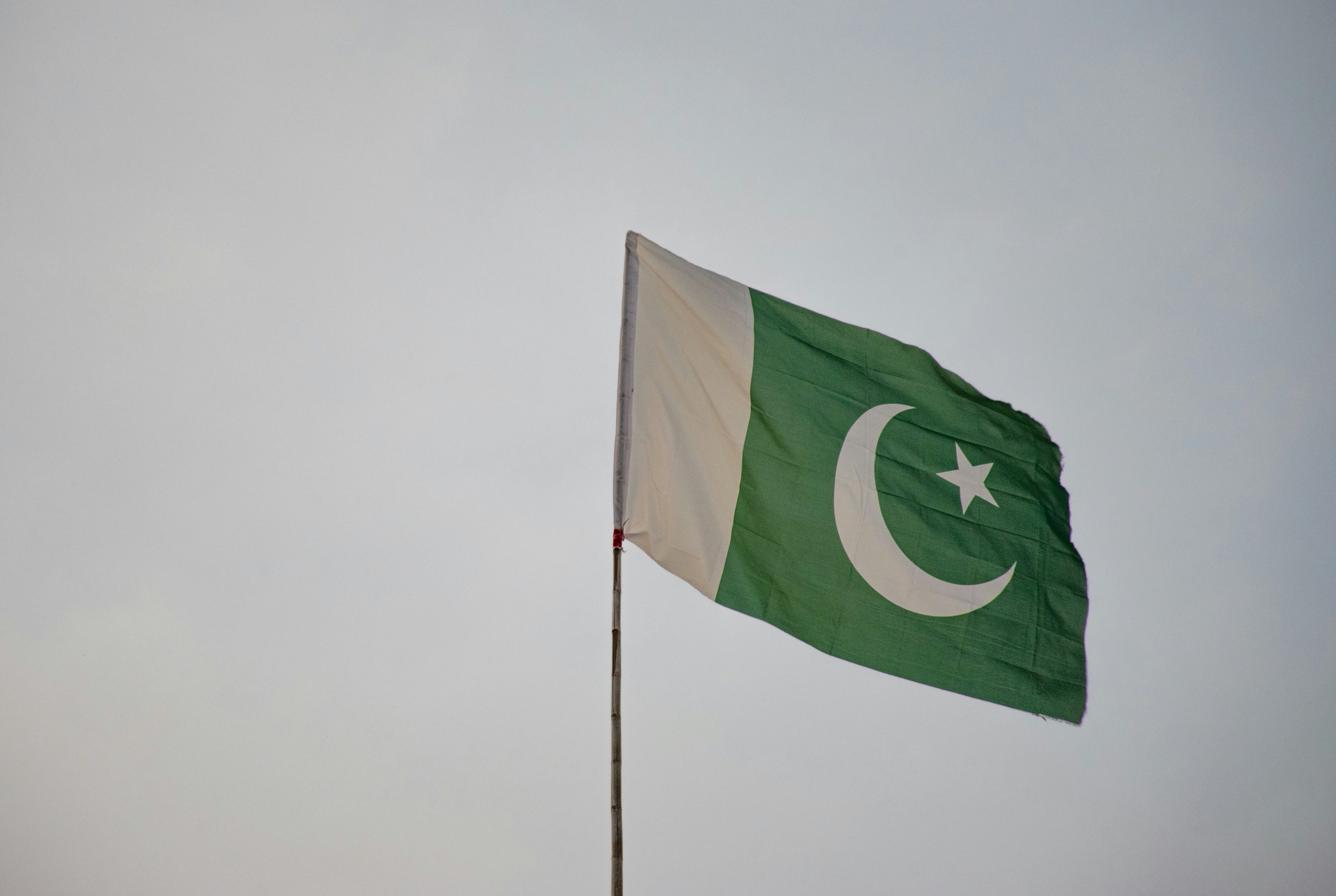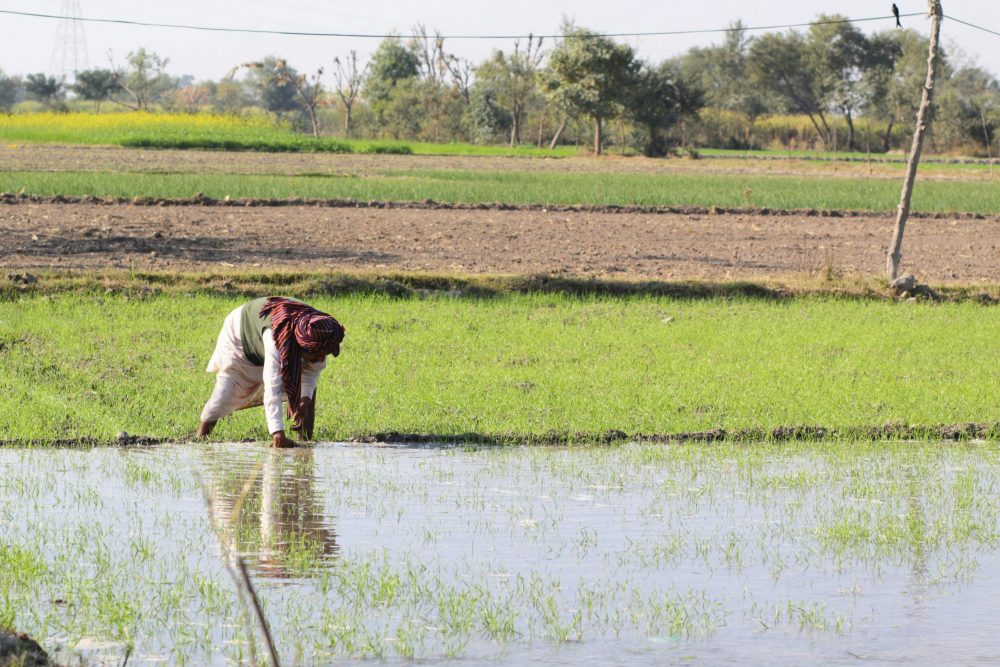Karachi: An Economic Epicenter under Climate-Siege
Karachi – Pakistan’s largest city and economic center, faces serious climate change threats due to its spatial position, dense population, and infrastructure hazards. With more than 20 million residents (Government of Sindh, 2023), the city is becoming increasingly vulnerable to rising sea levels, urban flooding, and heatwaves.
Urban flooding is one of Karachi’s most urgent climate challenges. Its closeness to the Arabian Sea increases the risk of coastal flooding, especially in low-lying areas of Korangi and Clifton, where informal settlements often lack proper drainage and safety measures (Urban Unit, 2025). The monsoon season in 2020 also caused significant damage and displacement, revealing how the city’s drainage system struggles to handle heavy rainfall (PDMA, 2023). Since then, constant attempts have been made to improve Karachi’s infrastructure, but lack of ownership and neglect has led to minimal improvements. Rapid urban growth and the encroachment on natural waterways and green spaces have worsened runoff and flood risks. The decline in the city’s natural drainage ability is closely tied to unregulated building practices and the absence of cohesive urban planning.
Karachi is also seeing a rise in urban heat island (UHI) effects due to lack of vegetation and increase in heat-retaining surfaces like asphalt and concrete. This rise has led to higher energy demand (CSCR, 2020) as well as heat-related health issues, notably witnessed in the 2015 heatwave, which resulted in over 1,200 deaths in the city. (MoCC, 2015)
To tackle these problems, Karachi needs smart, coordinated investment into climate-resilient infrastructure and land-use planning, such as stormwater drainage, coastal defenses, and nature based solutions such as expanded green areas.
Stronger enforcement of regulations against building on ecological buffers, as well as better coordination between the Karachi Metropolitan Corporation (KMC) and provincial agencies are crucial for the city’s long-term ability to adapt to climate change. Innovations such as AI-integration into early-warning systems as successfully implemented in Jakarta (EDRR, 2025) and the CoolRoofs programme from NYC (NYC MyCity, 2025) are opportunities worth investing into for a city in Karachi’s position. Investing in AI-integrated early-warning systems enhances Karachi’s climate resilience by improving disaster prediction, reducing mortality, and optimizing emergency response. Meanwhile, CoolRoofs mitigate urban heat, lower energy demand, and protect vulnerable populations. Both interventions offer scalable, cost-effective solutions to pressing climate challenges, aligning with global adaptation strategies.
Lahore: A Breathing Crisis
Lahore, the capital of Punjab and Pakistan’s second-largest city, is a major center for climate-related impacts, such as air pollution, rising temperatures, and worsening public health, such as respiratory diseases and heat-related illnesses.
With a population continuing to grow rapidly, Lahore’s expeditious urbanization has increased greenhouse gas emissions and strained city resources (World Bank, 2022). Key sources of air pollution include vehicle traffic, industrial activity, and the use of low-efficiency biomass and fossil fuels for energy (WWF, 2024). According to IQAir, Lahore is among the most polluted cities worldwide, with annual PM2.5 levels far exceeding the safe limits set by the WHO. The smog worsens with agricultural crop burning in Punjab and India, and rising temperatures, dry spells, and stagnant air conditions greatly intensify the problem. (WWF, 2024)
This decline in air quality leads to increased health risks. Respiratory and cardiovascular diseases rise during high smog periods, particularly among children and the elderly. Hospitals in Lahore see seasonal spikes in emergency visits, and ongoing exposure to particulate matter poses long-term risks for public health and economic productivity with the impacts exacerbated especially in low-income communities (Jabeen et al., 2021). Over 1.93 million people sought treatment for respiratory conditions in just 30 days across Punjab, including 126,230 cases in Lahore alone (DAWN, 2024).
Mitigation of this crisis requires a multi-faceted approach that includes stricter vehicle emission standards, promotion of public transport, regulation of brick kilns and factories, and tree planting initiatives to lower particulate matter levels. Projects like the Ravi Urban Development Project and many of Lahore’s tree plantation efforts show promise. Integrating strategies such as the Miyawaki Method (Ahsan, 2021), can offset emissions , but need strict execution and environmental assessments to ensure they align with climate goals. Furthermore, the new nationwide entry of BYD can enhance the adoptions of Electric Vehicles in Lahore. (Reuters, 2024).
Islamabad: The Leader Against Global Warming
In comparison to Karachi and Lahore, Islamabad – Pakistan’s federal capital, fares far better in climate resilience, due to a comparatively lower population density, planned zoning layout, and federal governance resources. Still, it faces increasing climate risks, especially from growing urban sprawl, unpredictable rainfall trends, and deforestation. With a population of over 2 million (Pakistan Bureau of Statistics, 2023), Islamabad’s development challenges are increasingly rising with its ecological deterioration
The city has faced growing rainfall variability in the last decade, leading to more frequent flash floods in urban neighborhoods. These floods are made even more damaging by poor stormwater management, urban drainage, and illegal construction on natural waterways. Floodings exposed illegal construction on nullahs in areas like E-11 where devastating floods were seen. Poor infrastructural foresight saw many communities suffer due to placement on storm drains that were not equipped to handle such flow.
Islamabad is also losing forest cover, especially in the Margalla Hills National Park and surrounding green areas (Misb, 2025). A GIS-based land use study covering 2020 to 2022 shows that tree-covered land decreased from 13,670.6 hectares (136.7 km²) to 12,048 ha (120.5 km²), a loss of 1,622.6 ha or 12% decline in just two years (Sajawal et al, 2024). Climate change impacts like inconsistent rainfall and extended dry periods heighten the risk of forest fires and biodiversity loss. Rapid real estate development and informal settlements are undermining ecological buffers that help regulate temperature and absorb carbon.
Despite these challenges, Islamabad has the potential to serve as a model for urban climate governance. As the center of national policy-making, it houses institutions like the Ministry of Climate Change and the Pakistan Environmental Protection Agency (Pak-EPA), responsible for creating and implementing strategies for mitigation and adaptation. Projects like the Islamabad Green City Initiative and urban water conservation campaigns highlight the city’s ability to connect climate policy with urban progress, but they require fund mobilization, cooperation between government agencies, and citizen engagement to achieve real results. Islamabad has often been hailed one of the most beautiful cities in the world, and many legislations with widespread effect e.g. the National Climate Change Policy, National Adaptation Plan, Green Finance Regulations from the State Bank etc.,originate in the heart of the capital, but it is the enactment of these policies that is essential to for the city to mitigate future climate disasters.
As climate change intensifies, the true test for Pakistan’s cities is not only survival but transformation, turning vulnerabilities into opportunities for green innovation. Karachi, Lahore, and Islamabad can become case studies for climate-resilient urban futures if they embrace bold, cross-sectoral, and community-centric action today.
References
Ahsan, A. (2021). Implementing the Miyawaki method in Lahore. DAWN.COM. https://www.dawn.com/news/1614144
Anwar, R. (2024). Pakistan’s urban heat islands. Centre for Strategic and Contemporary Research. https://cscr.pk/explore/themes/energy-environment/pakistans-urban-heat-islands/
Chaudhry, A. (2024, November 15). 2 million seek treatment as smog chokes Punjab. DAWN.COM. https://www.dawn.com/news/1872493
“Editor 3”. (2025). Early Warning Systems: Indonesia’s Tech Shift – EDRR. EDRR. https://edrri.com/early-warning-systems-indonesias-tech-shift/
Government of Sindh. (2023). Population Census. https://commissionerkarachi.gos.pk/population
Jabeen, F., Ali, Z., & Maharjan, A. (2021). Assessing Health Impacts of Winter Smog in Lahore for Exposed Occupational Groups. Atmosphere, 12(11), 1532. https://doi.org/10.3390/atmos12111532
Junaidi, I. (2024). Survey points out govt’s failure to improve disaster risk management. DAWN.COM. https://www.dawn.com/news/1863705/survey-points-out-govts-failure-to-improve-disaster-risk-management
Ministry of Climate Change. (2015). Technical Report on Karachi Heatwave June 2015. https://mocc.gov.pk/SiteImage/Misc/files/Final%20Heat%20Wave%20Report%203%20August%202015.pdf
Misb. (2025). Protecting Margalla. DAWN.COM. https://www.dawn.com/news/1893970 NYCMyCity, (2025).
NYC CoolRoofs. Nyc-Business.nyc.gov. https://nyc-business.nyc.gov/nycbusiness/business-services/incentives/nyc-coolroofs
Pakistan Bureau of Statistics. (2023). Islamabad Population Census 2023. https://www.pbs.gov.pk/sites/default/files/population/2017/results/13501.pdf
Provincial Disaster Management Authority. (2023). Rain and Flood. https://pdma.gos.pk/rain-flood/ Reuters Staff. (2024). China’s BYD plans car plant in Karachi as part of Pakistan entry. Reuters. https://www.reuters.com/business/autos-transportation/chinas-byd-plans-car-plant-karachi-part-pakistan-entry-2024-08-17/
The Urban Unit. (2025). Karachi Climate Action Plan. https://urbanunit.gov.pk/Download/publications/Files/24/2025/Karachi%20Climate%20Action%20Plan_Launch_compressed.pdf
World Bank Group. (2022). Pakistan – Country Climate and Development Report. https://documents1.worldbank.org/curated/en/099950111072234047/pdf/P17671804998b80030ac4f0233dc0b995b a.pdf
World Wide Fund for Nature. (2024). Lahore’s air quality poses serious threats to public health and biodiversity https://www.wwfpak.org/?388795/Lahores-air-quality-poses-serious-threats-to-public-health-and-biodiversity
About the Author: Mustafa Abdullah is a Second Year student at the Karachi Grammar School interested in sustainable solutions and environmental safeguarding. He is a researcher and writer published in academic journals and the DAWN newspaper. Contact : m.raja16259@kgs.edu.pk





